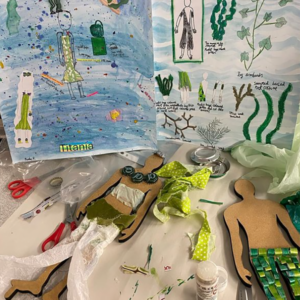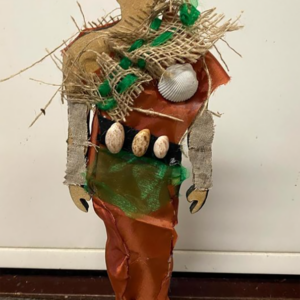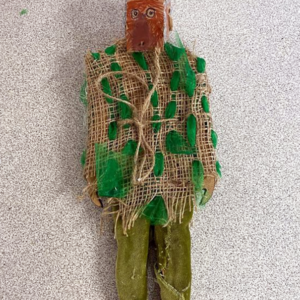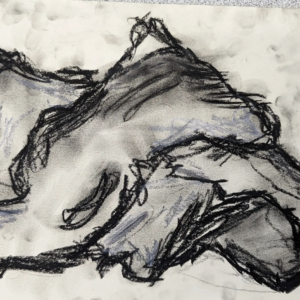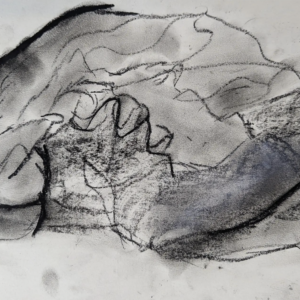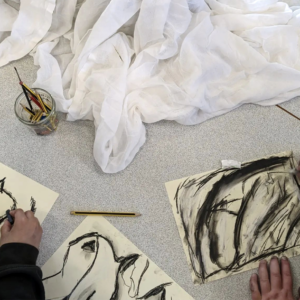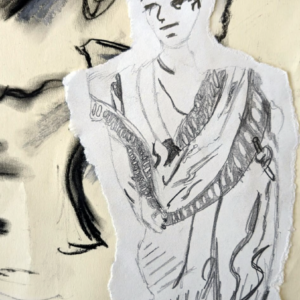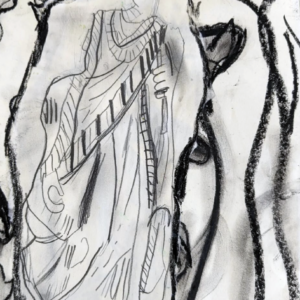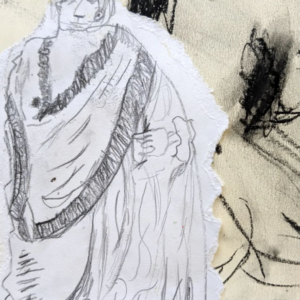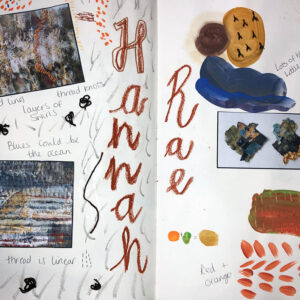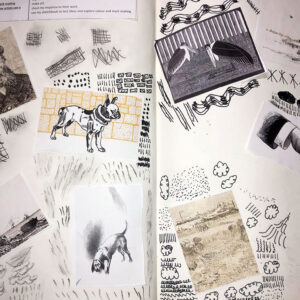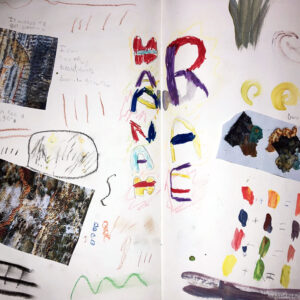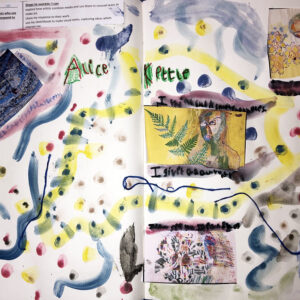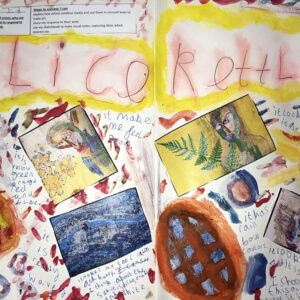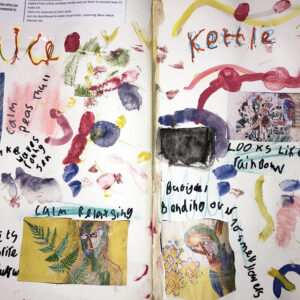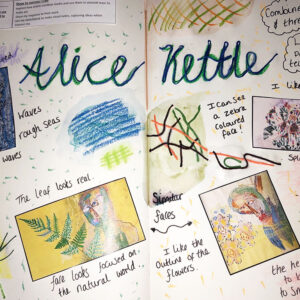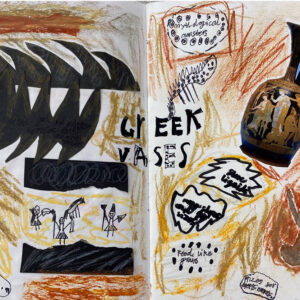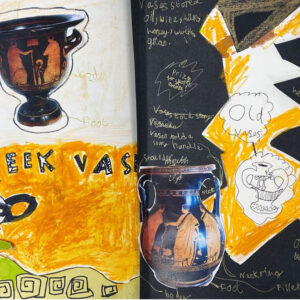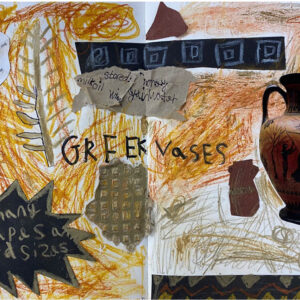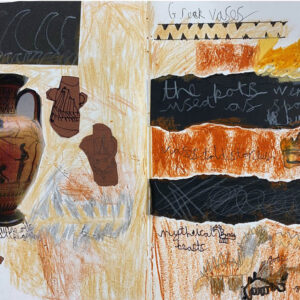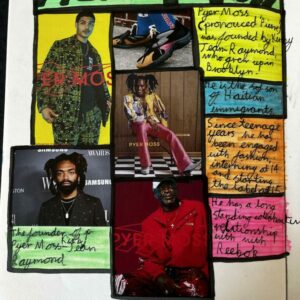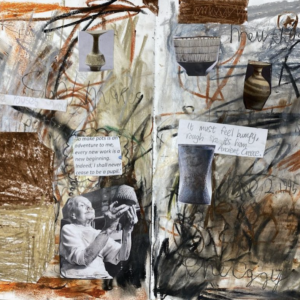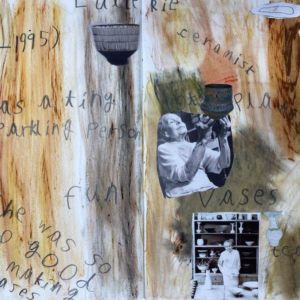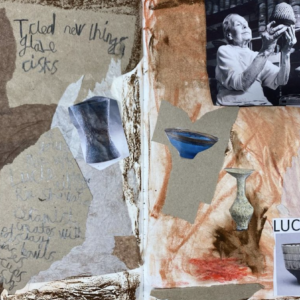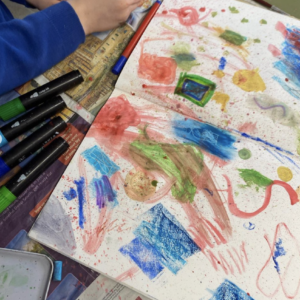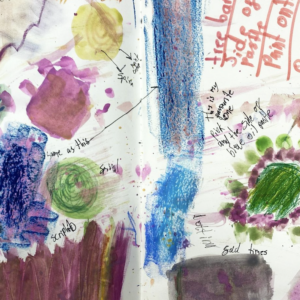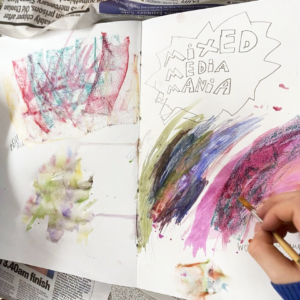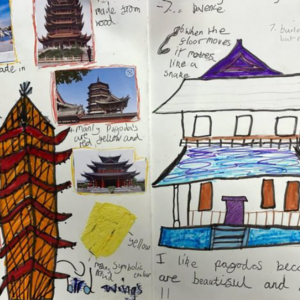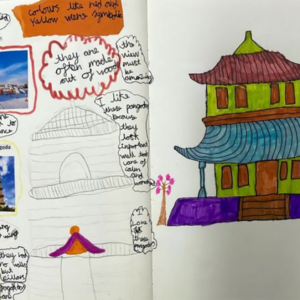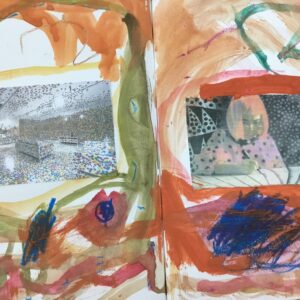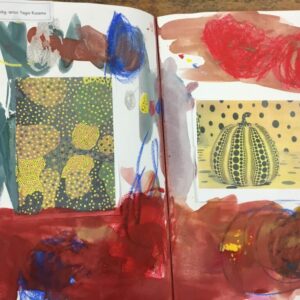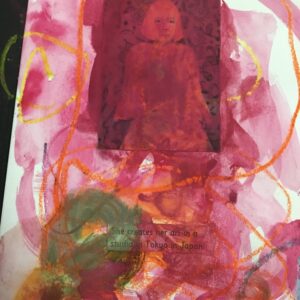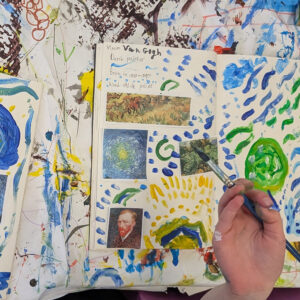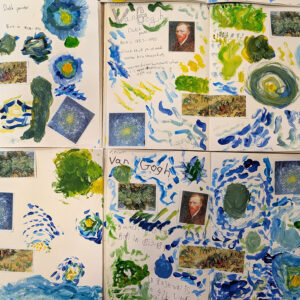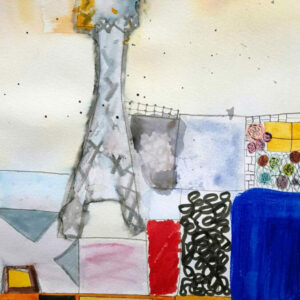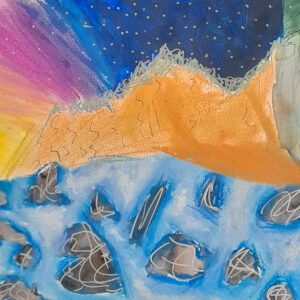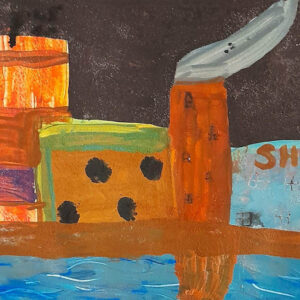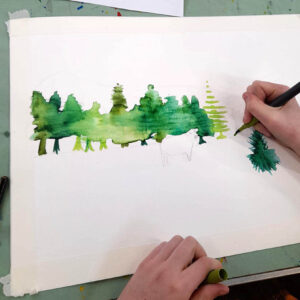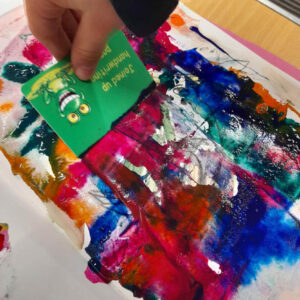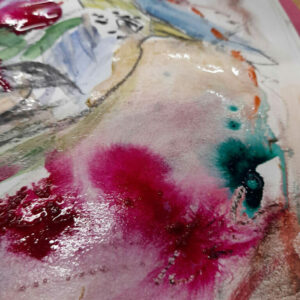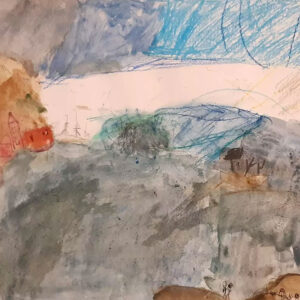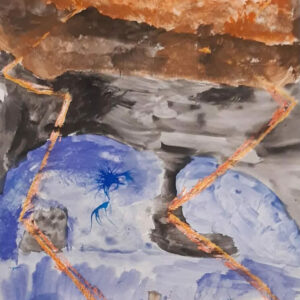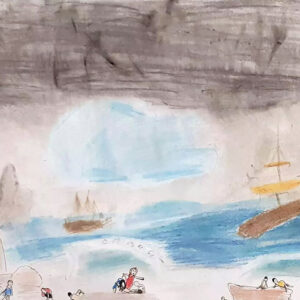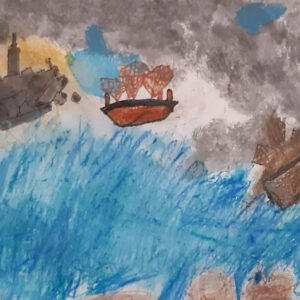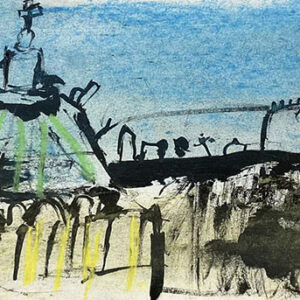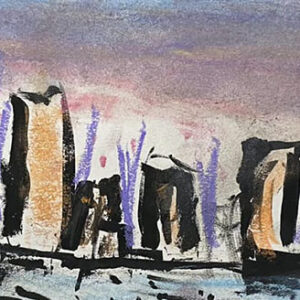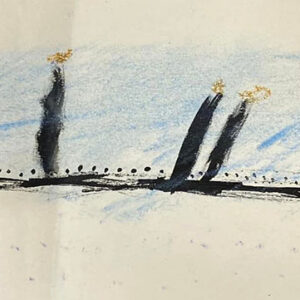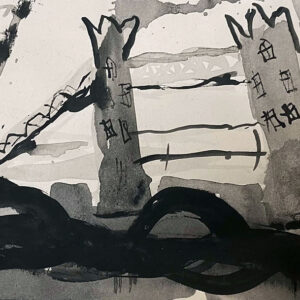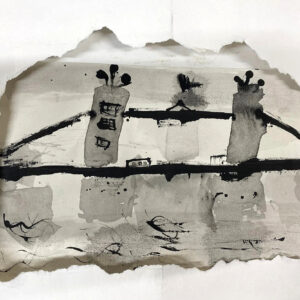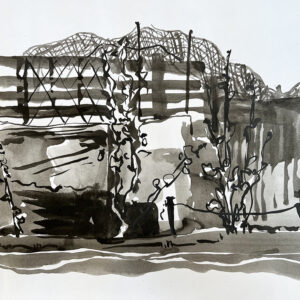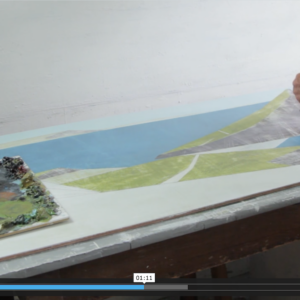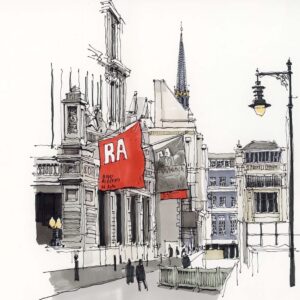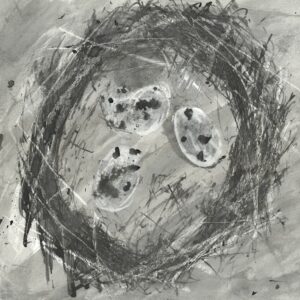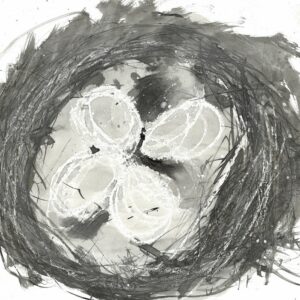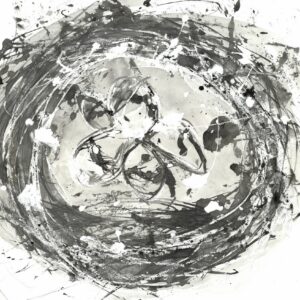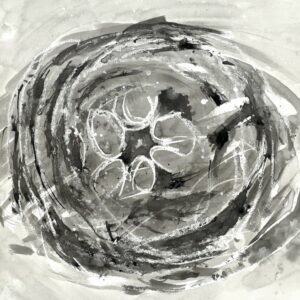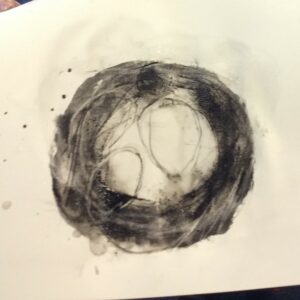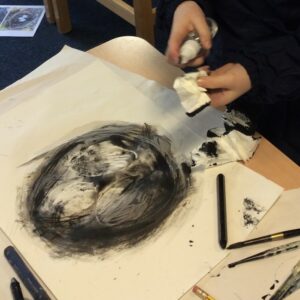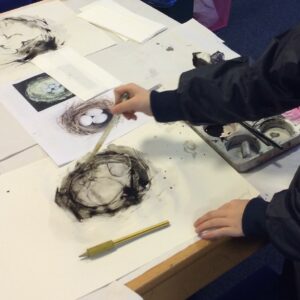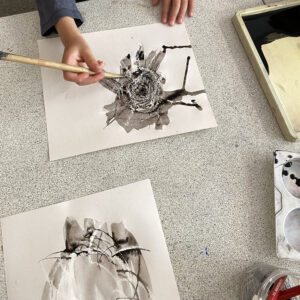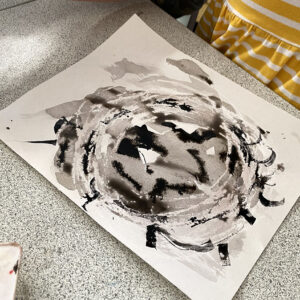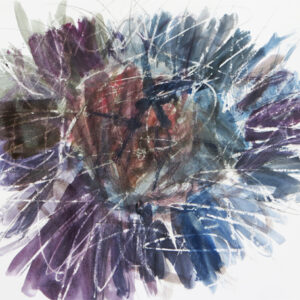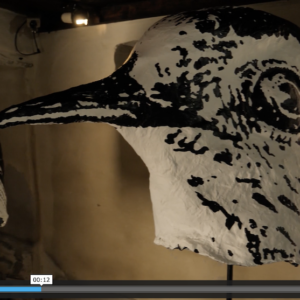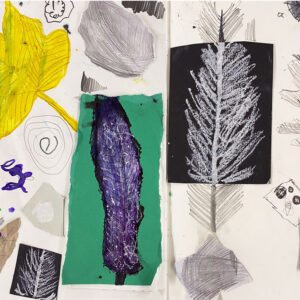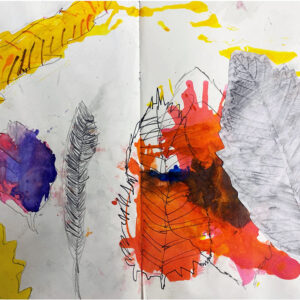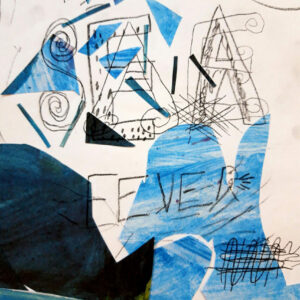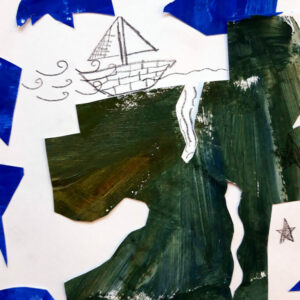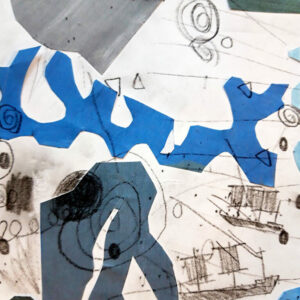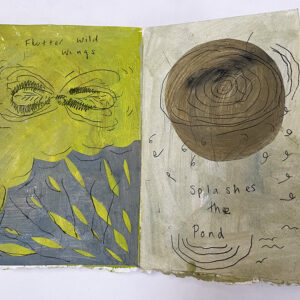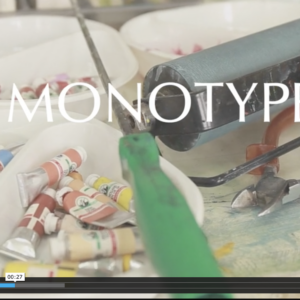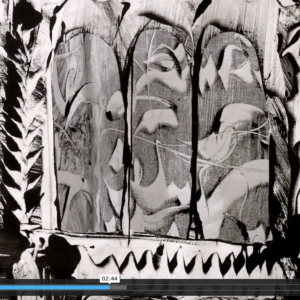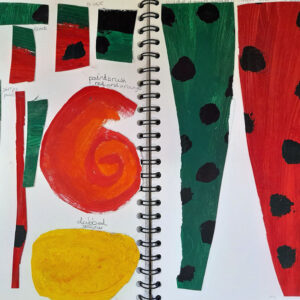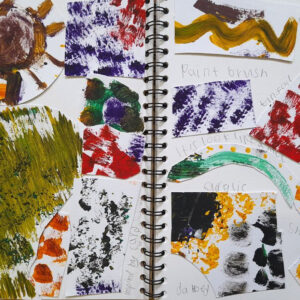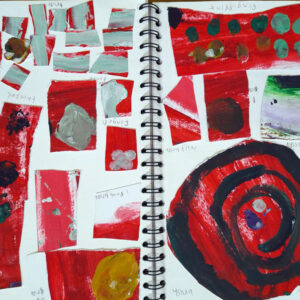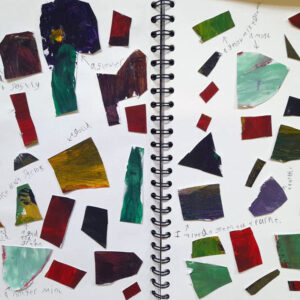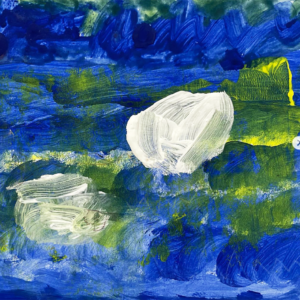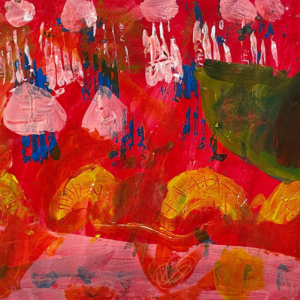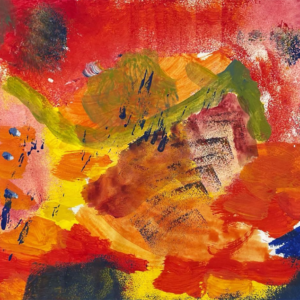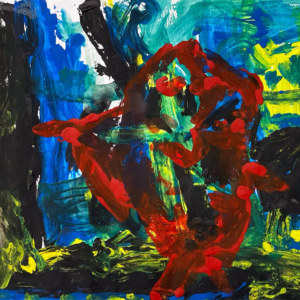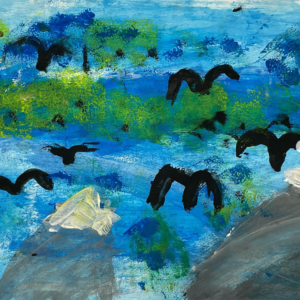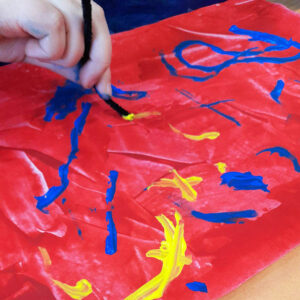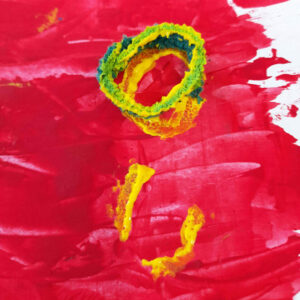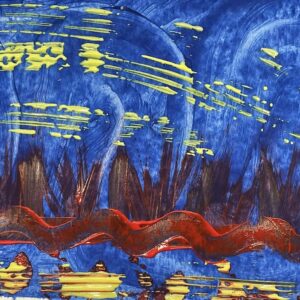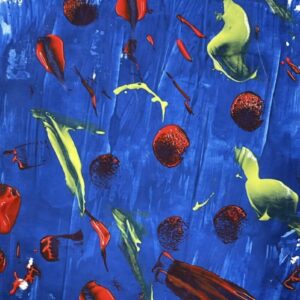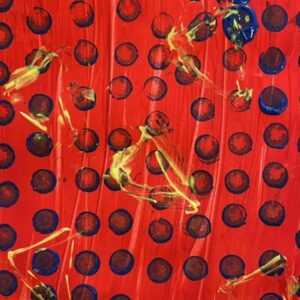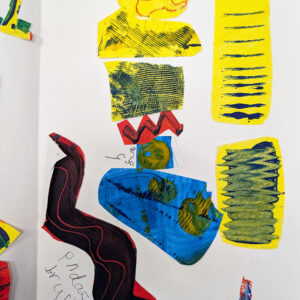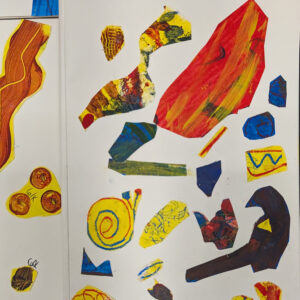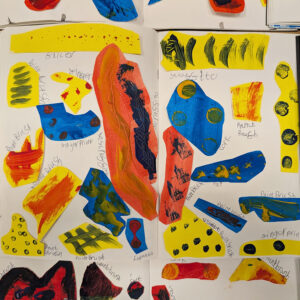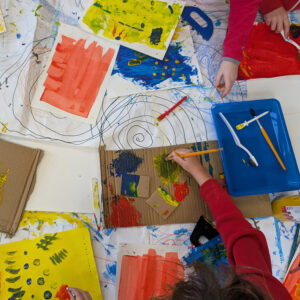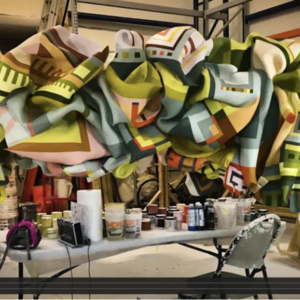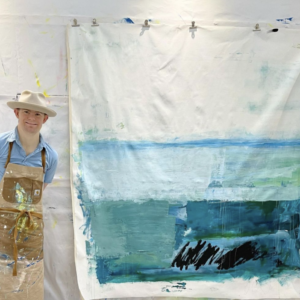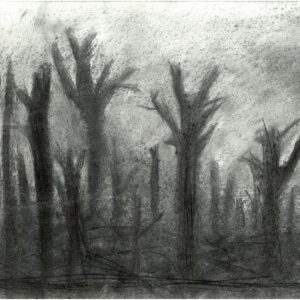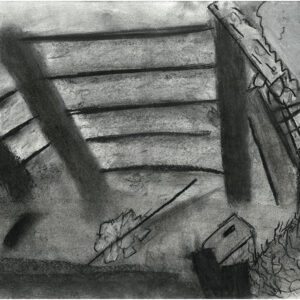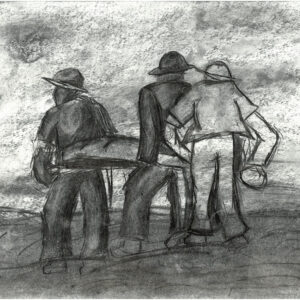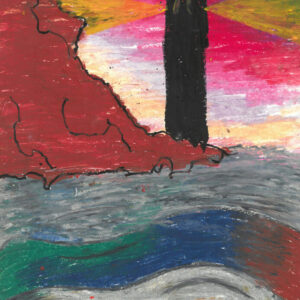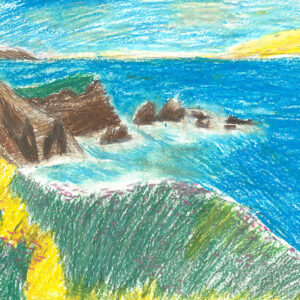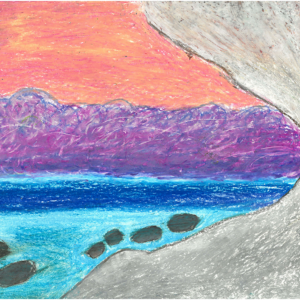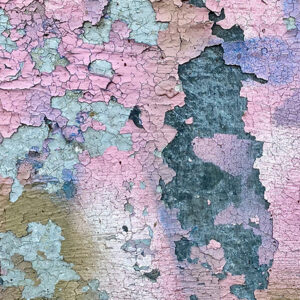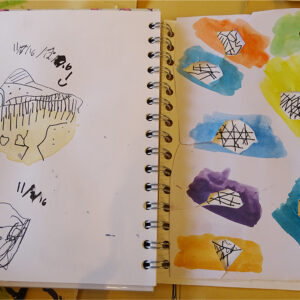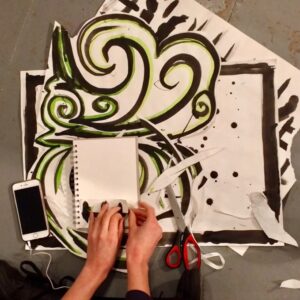
This series of six sessions explores Shakespeare’s A Midsummer Night’s Dream through art and is aimed at upper KS2 children (Years 5 and 6) although could be delivered to younger age groups with some simplification in terms of the use of text. The aim of the series is to introduce children to the work of Shakespeare in a fun and creative way.
In this fourth of six sessions that explore Shakespeare’s A Midsummer Night’s Dream, the forest collage begun in session three is expanded on. In this session, the role of moonlight is explored, with light and shadow added to the collages to create mystery and magic.
Children begin with a warm up, drawing shadows from still life objects, before moving onto their collages and adding in a moon that places the ‘world’ of the collage at night.
Go back to session three here.
Session Four: Making Light and Dark Drawings on your Collage
Warm up: 15 minutes
Main Activity: 45 minutes
Materials needed: A3 or A2 cartridge paper, drawing pencils, charcoal, erasers, coloured pencils or pastels, a range of still life objects such as branches, flowers, other natural forms that we might associate with nature or forests, some candles or battery powered tea lights/torches.
Focus Theme: Night and Day, the Moon, Dreams
Time for a Warm Up! Drawing by candle light (or torchlight)
Make this fun and spooky by turning the lights out and lighting the candles/positioning the torches around the objects to create shadow.
This activity is not about a traditional still life – but more about how the lack of light might askew our vision and change our perspective of reality.
Begin by observing the objects in front of you on the table, noticing the shapes they make and the shadows they form. Take your charcoal or pencil and draw what you see.

If you are using candlelight – how does the flickering light change this line?
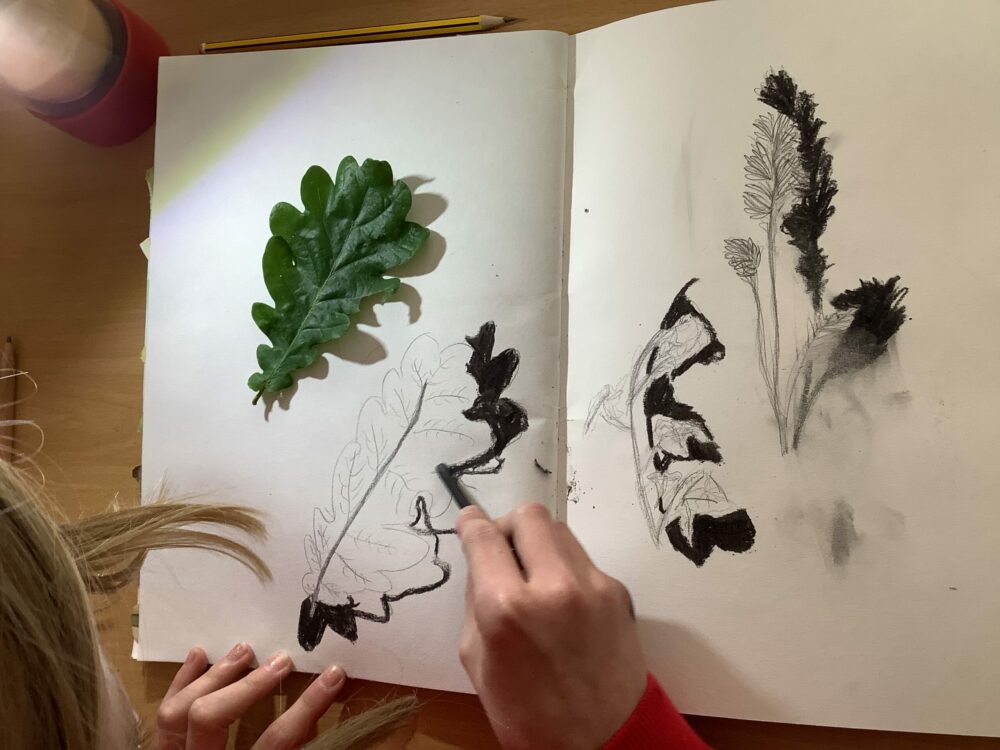
Keep a close eye on the shadow cast by the objects. Look at the effects of drawing the shadow as well as the object itself.
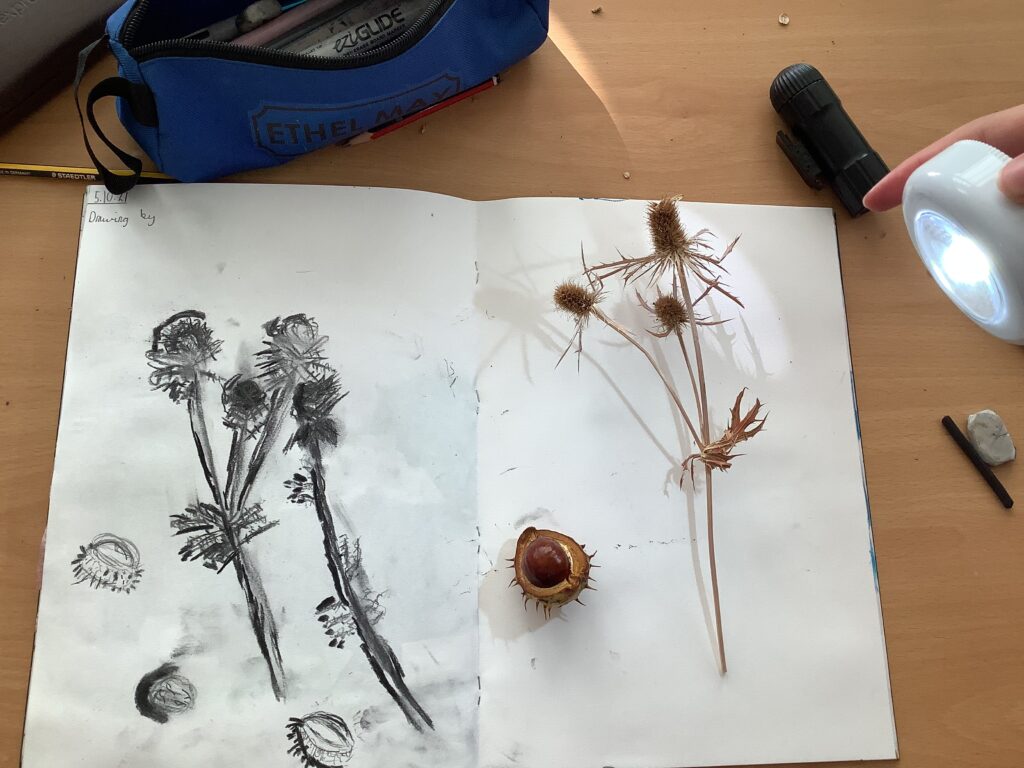
Once you have spent a few of minutes on a drawing, move onto another. Using a sketchbook works best for this warm up.
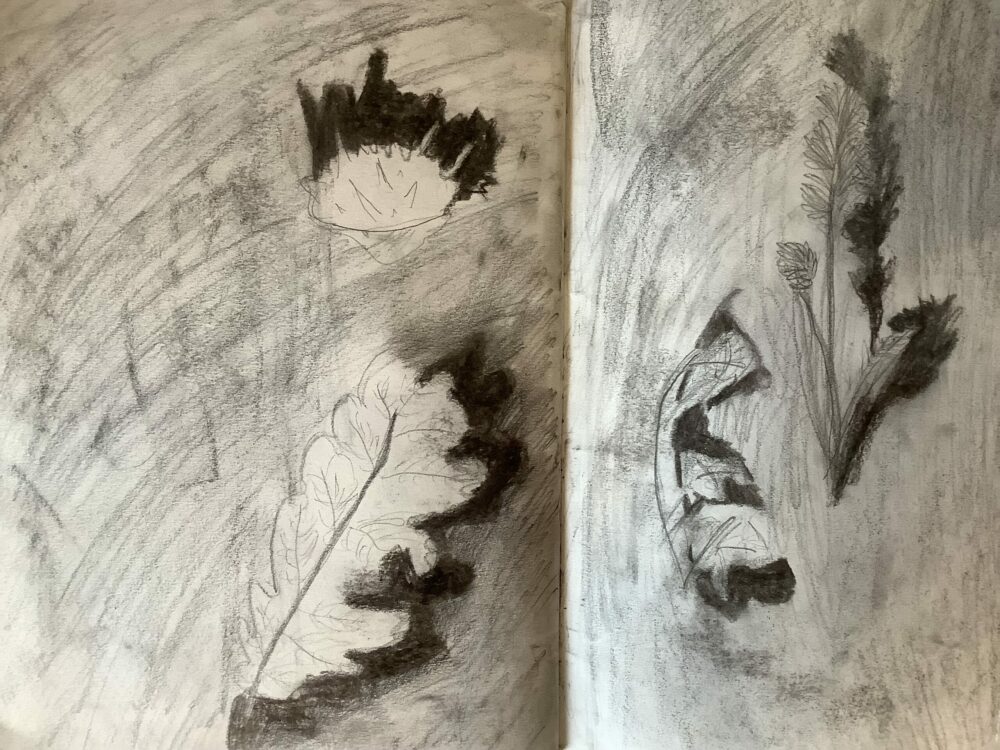
Starter Discussion:
There are several references to the moon in A Midsummer Night’s Dream. Nighttime is the time of mystery and dreams – and the moon imagery that Shakespeare uses sets a dream like backdrop to the events that happen in the play.
Moonlight is quite different to daylight – how would you say they are different?
A full moon is often associated with madness, like in the case of a werewolf. At the beginning of the play, Hippolyta describes the moon as ‘like a silver bow/New bent in heaven’
If we imagine the moon as a bow, poised ready to shoot an arrow down from the sky, who will the arrow hit and what might happen? We could say this introduces the madness that is to follow.
Main Activity: Adding light and dark to your forest collage.
You’re going to continue building on your forest collage, this time thinking more about light and dark.
Spend some time as a group looking at what you’ve done so far. Do any more trees or natural forms need adding with more collage? If so, begin with this.
Next, how might the forest look different at night? Is part of your forest lit by the moon and another part showing the sun just rising? Discuss your ideas a group. Can you use some of the techniques from the warm up to create some interesting marks and forms through the collage. Begin to work in, under and on the top of your trees so create deeper layers.
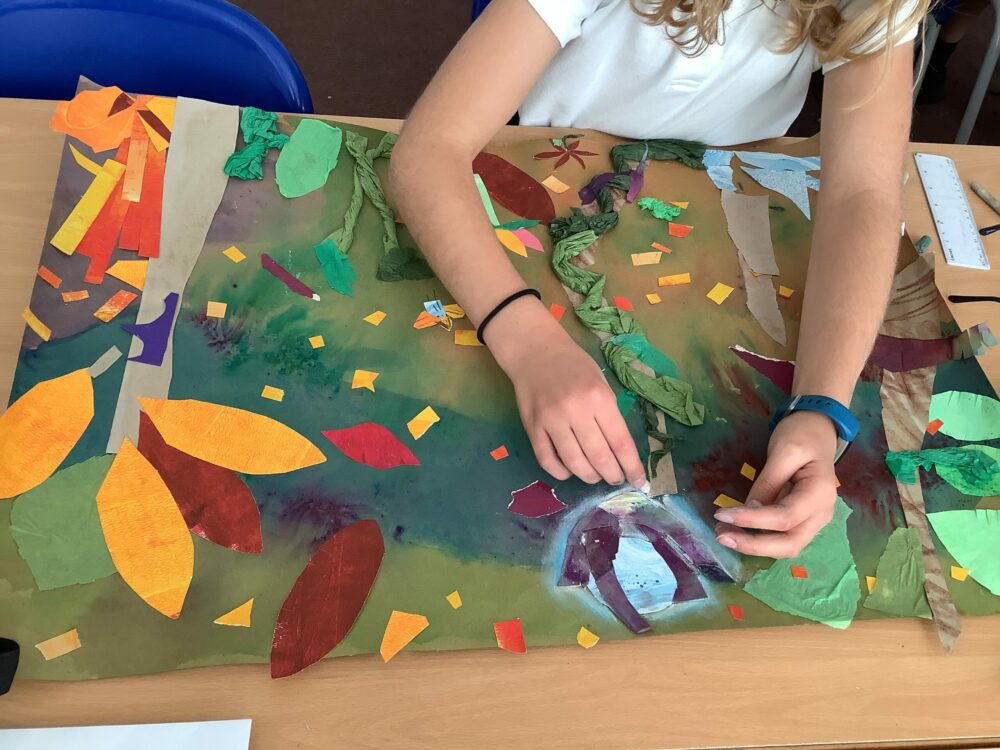
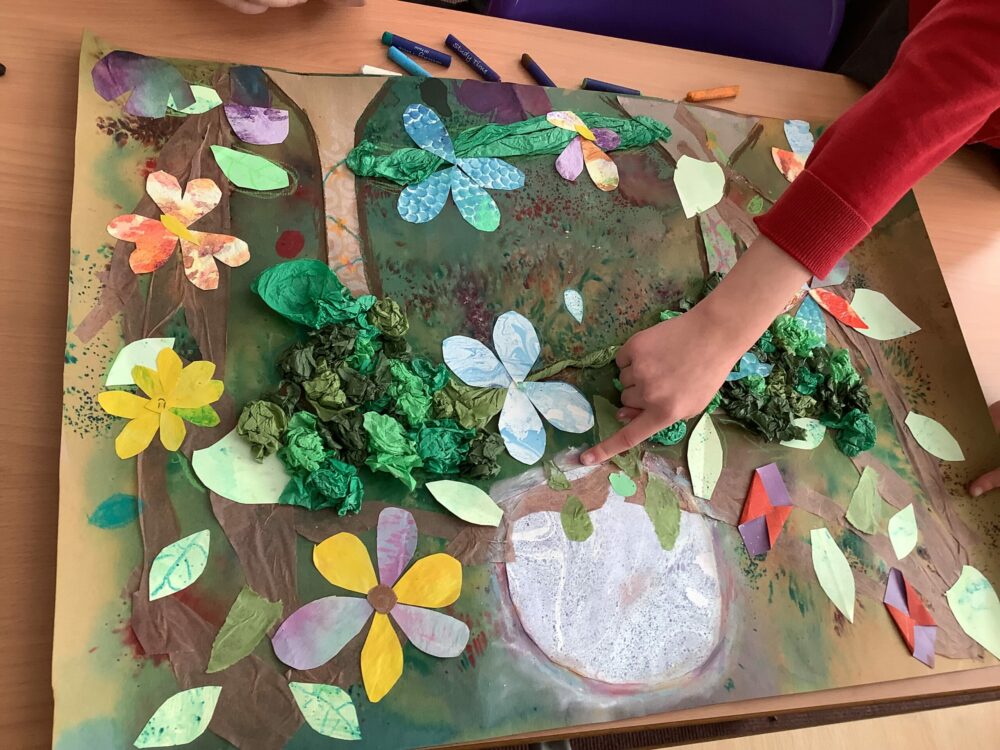
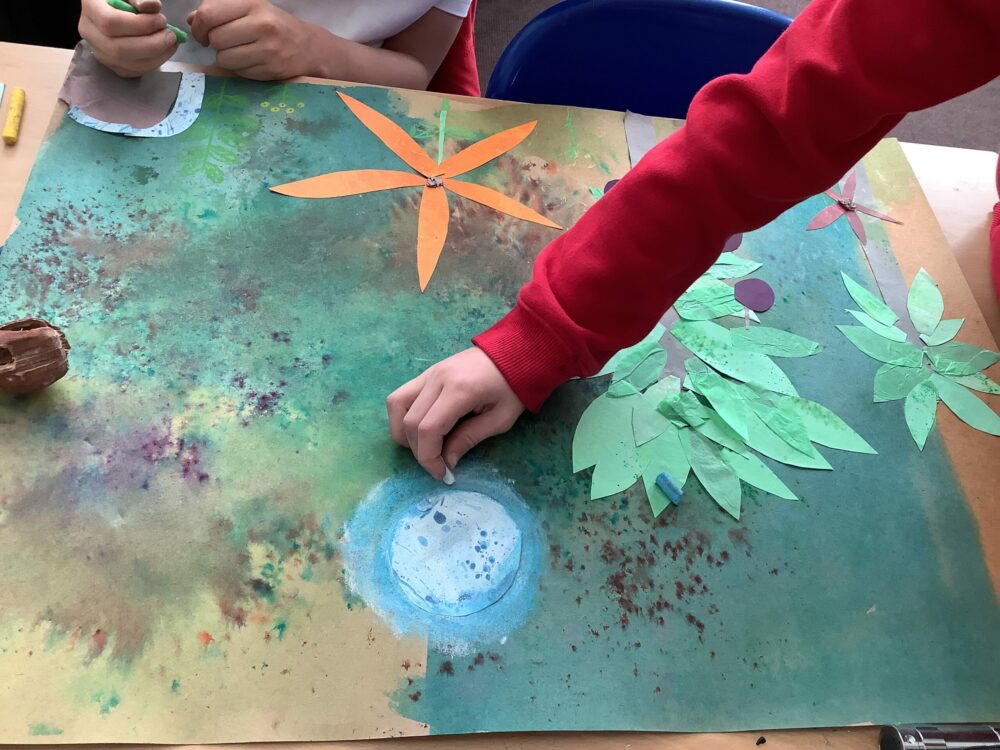
Work over the top of your paper using pastels.
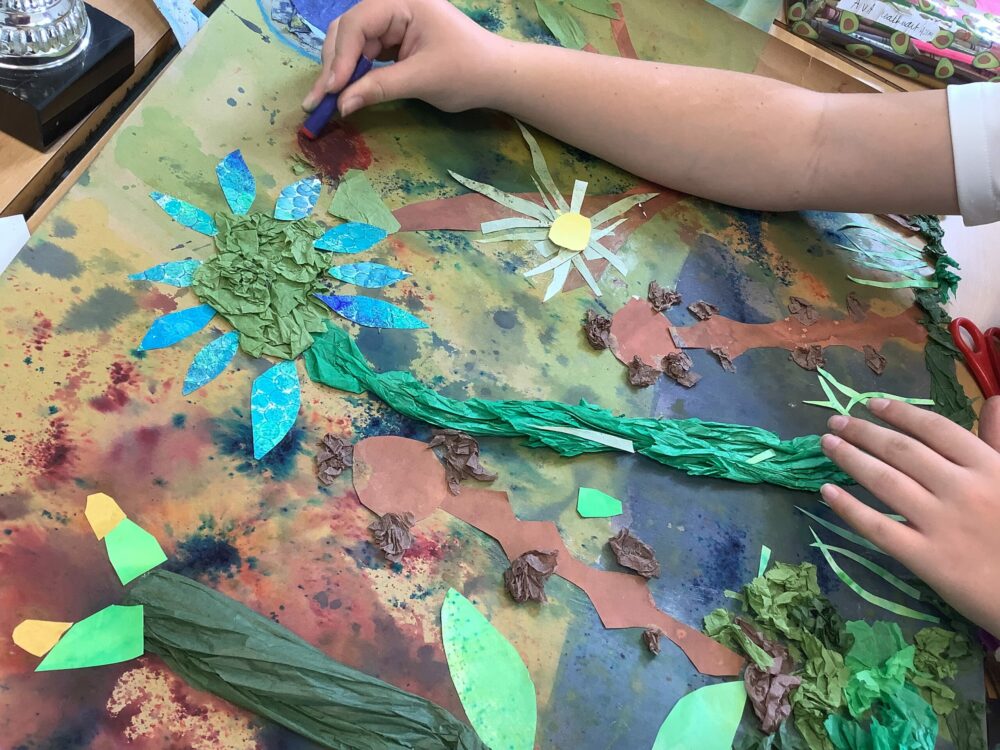
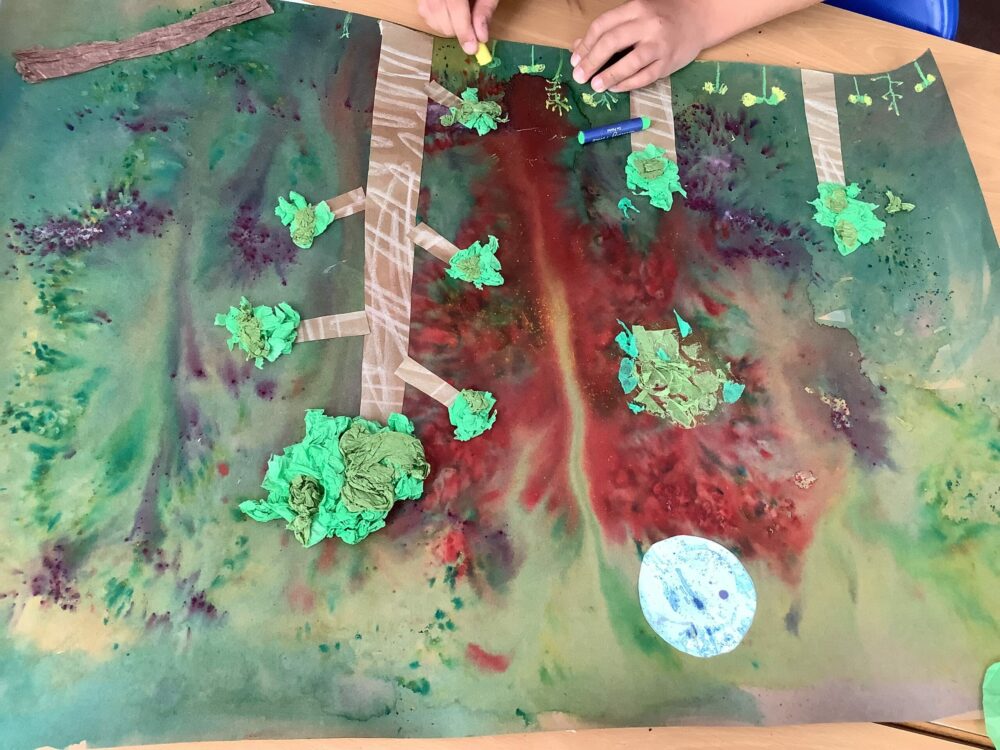
You could even use some key quotes or words connected to the forest and ‘weave’ this into the collage, as if drifting through the leaves.
Do you want to add an indication of the fairies somehow? They are often well hidden and come out at night, so a suggestion rather than statement might work best here.

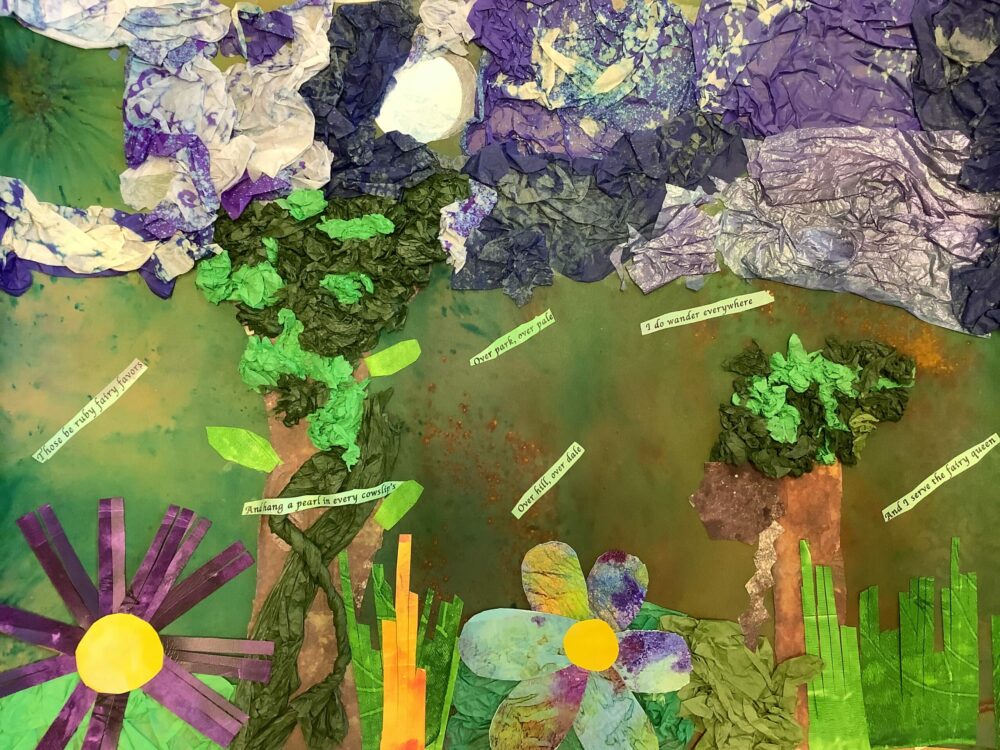
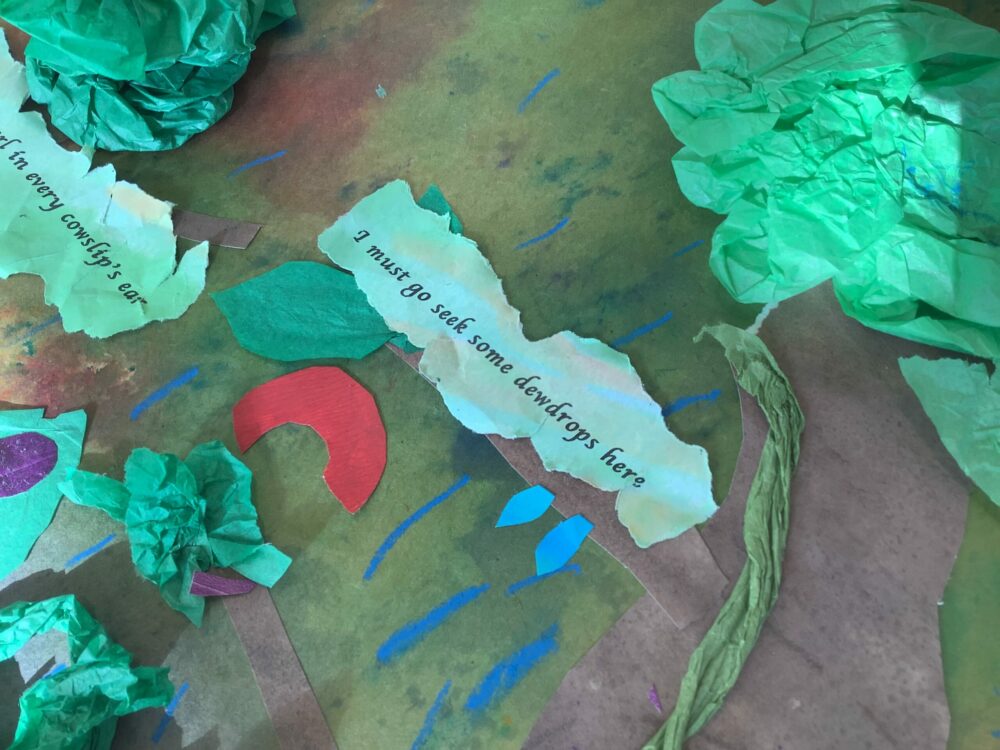
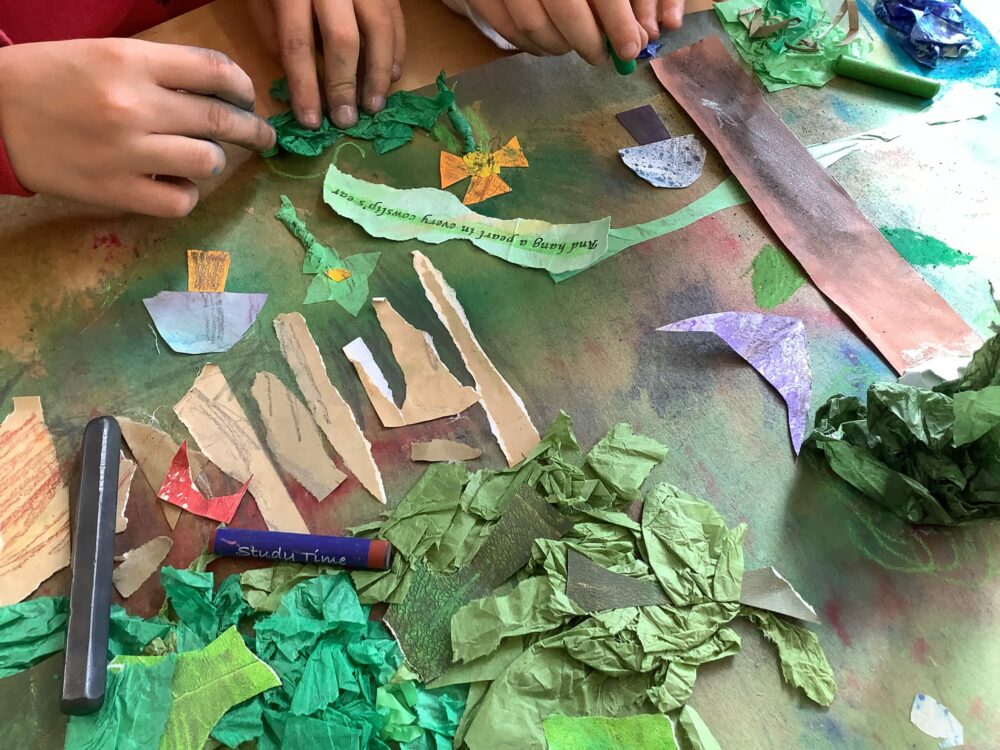
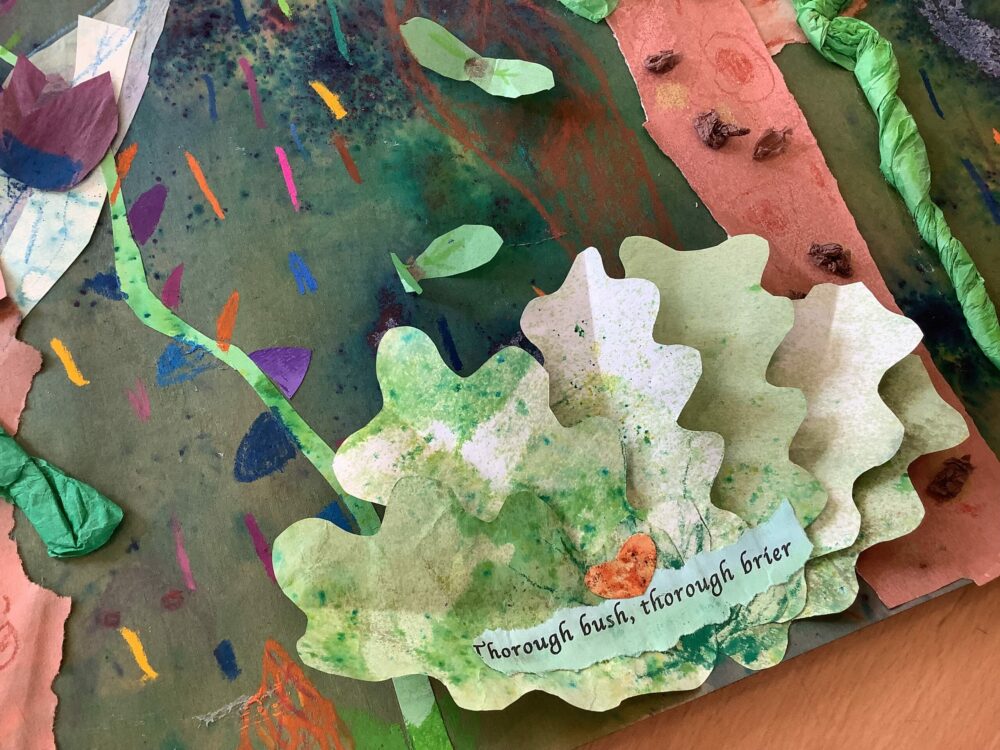
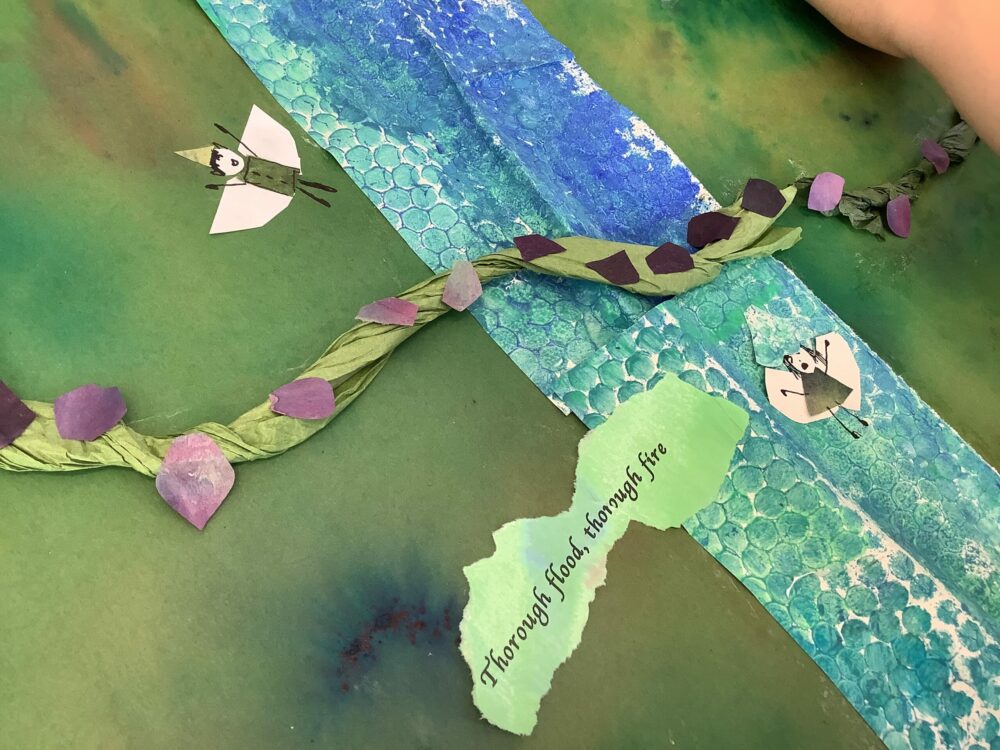
Don’t worry about sticking to the size of the paper – spilling your collage out beyond the edges might look really effective and mirror the wild qualities of the forest and its inhabitants.
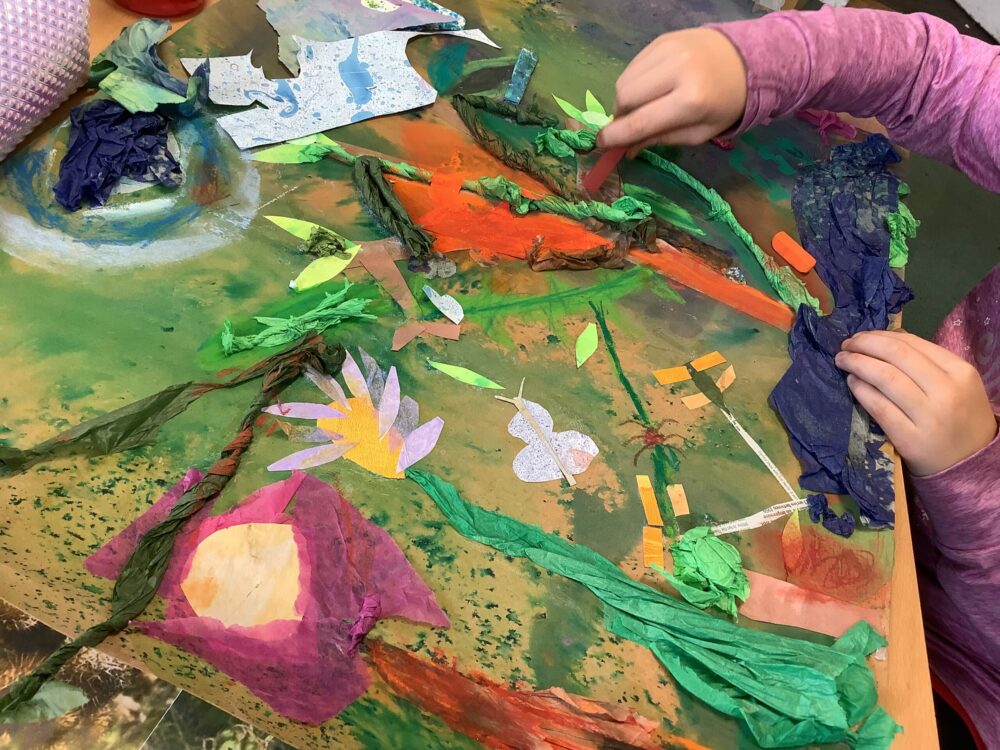
If you are making an ‘indoor forest’ ie the trees all being made separately, now is a good time to connect these trees together with more paper. Perhaps long winding strips to indicate ivy or vines? Can you make some darker and smaller trees, placing them in and amongst the larger ones to create a sense of perspective and depth?
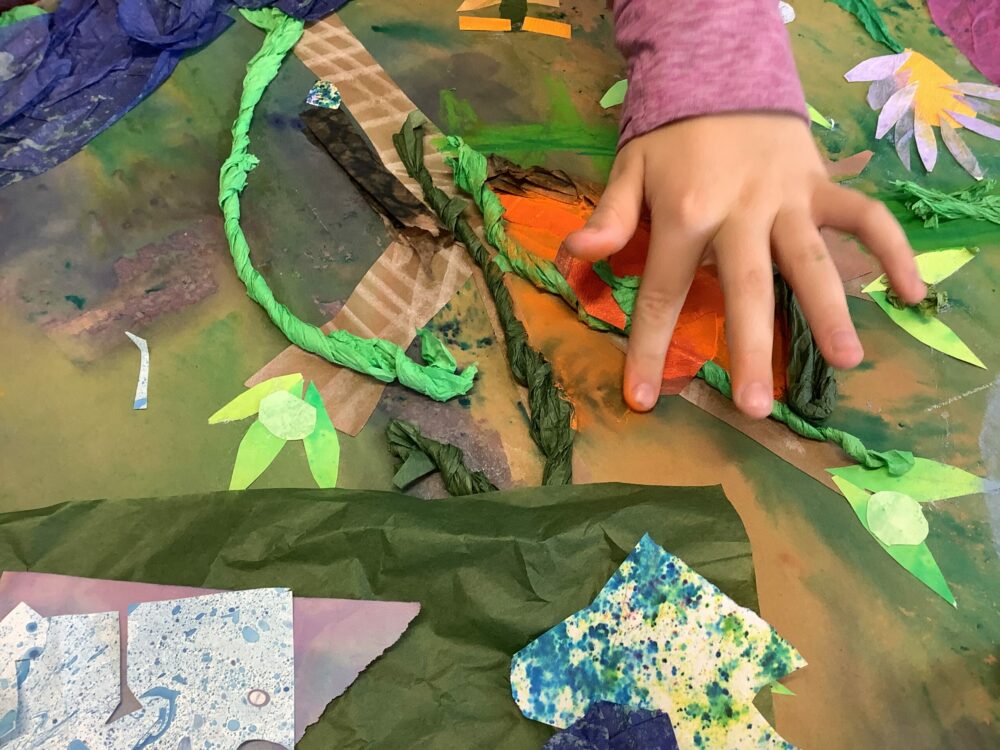
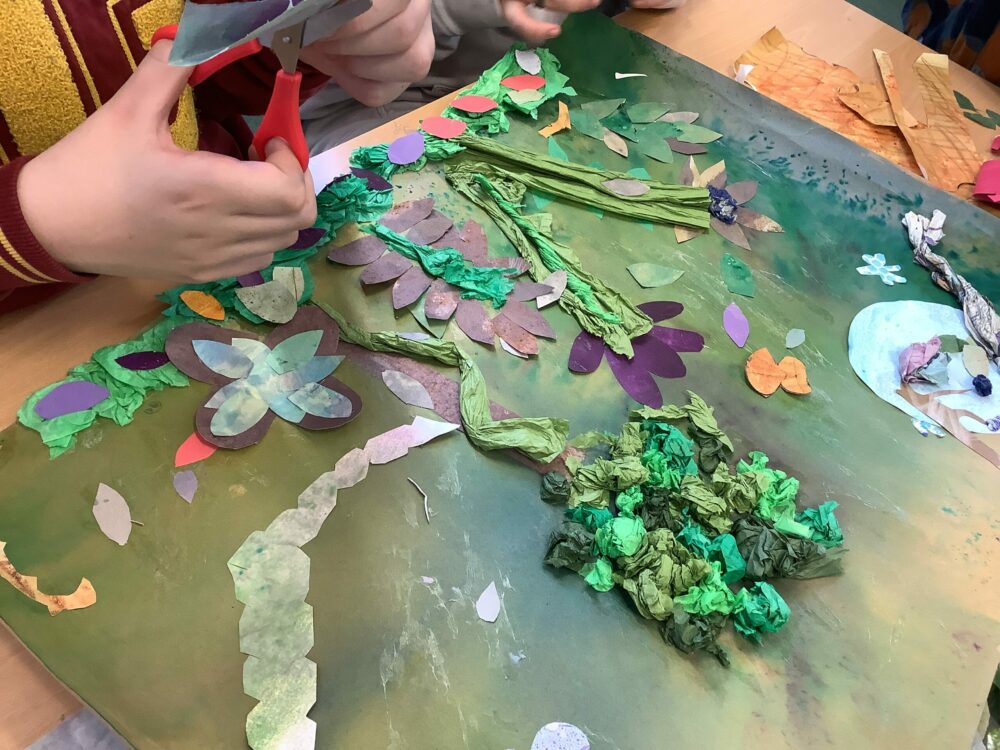
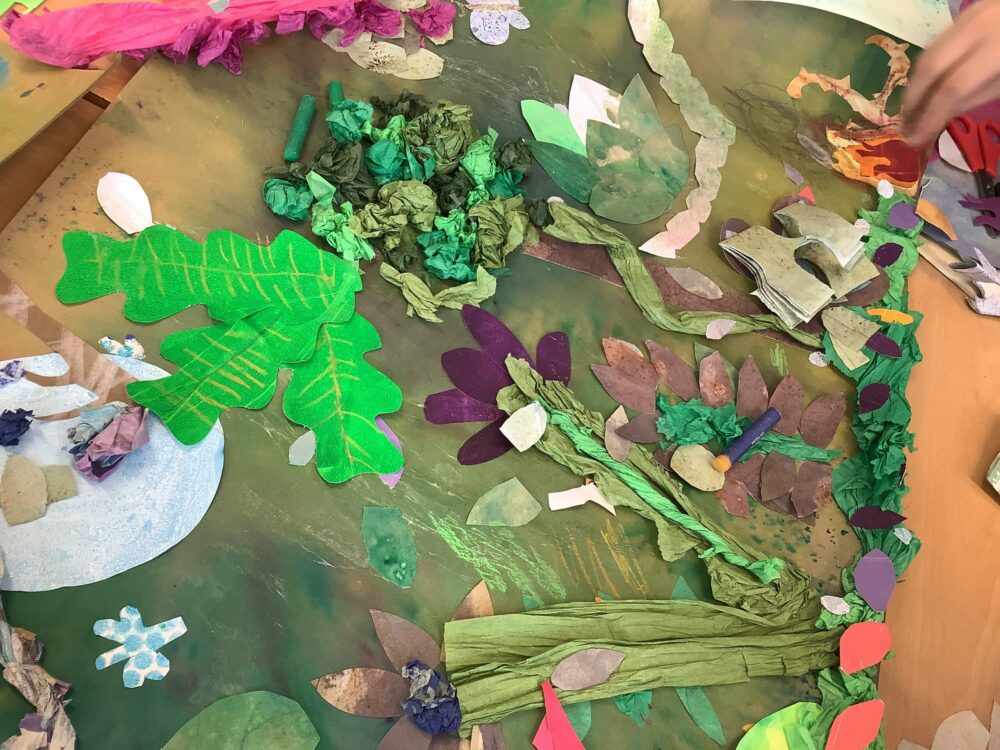
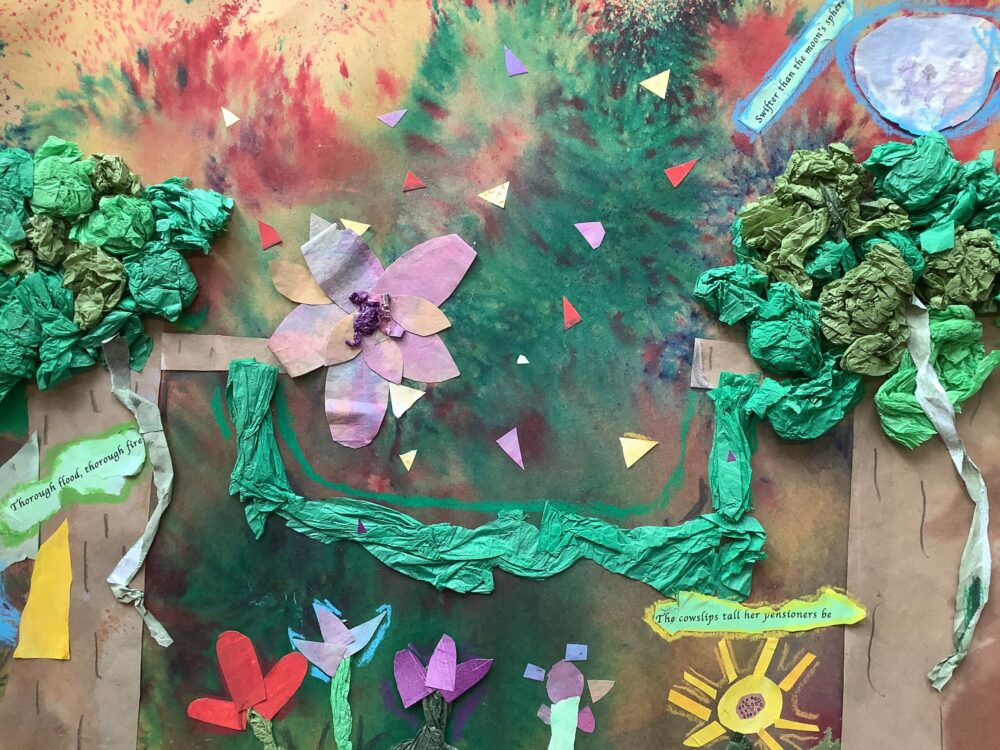
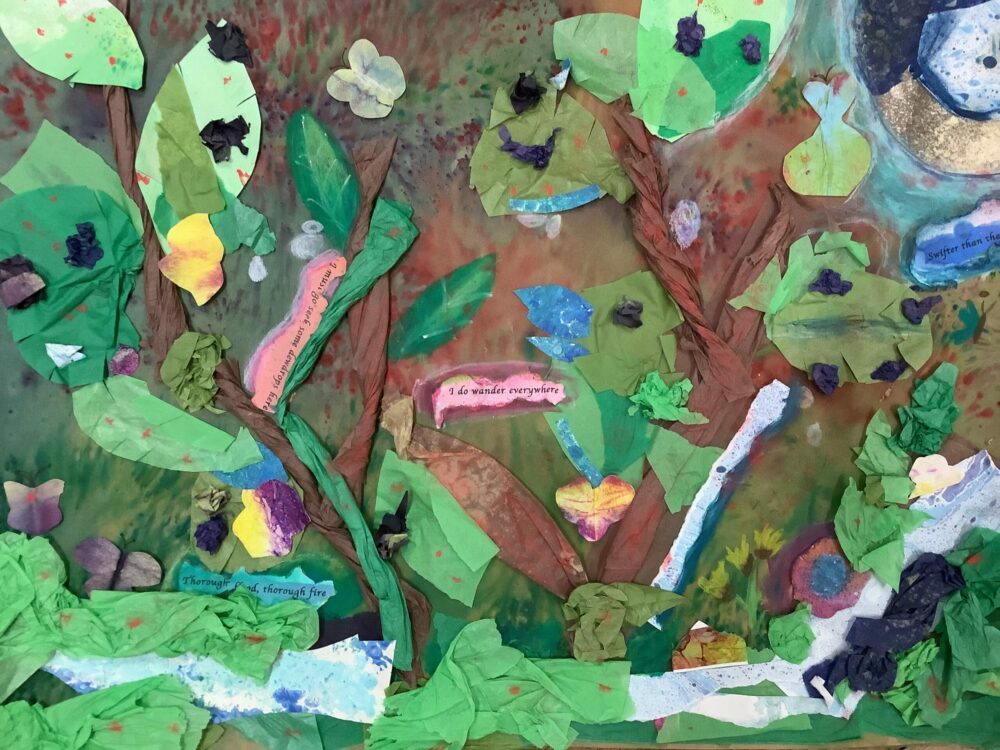
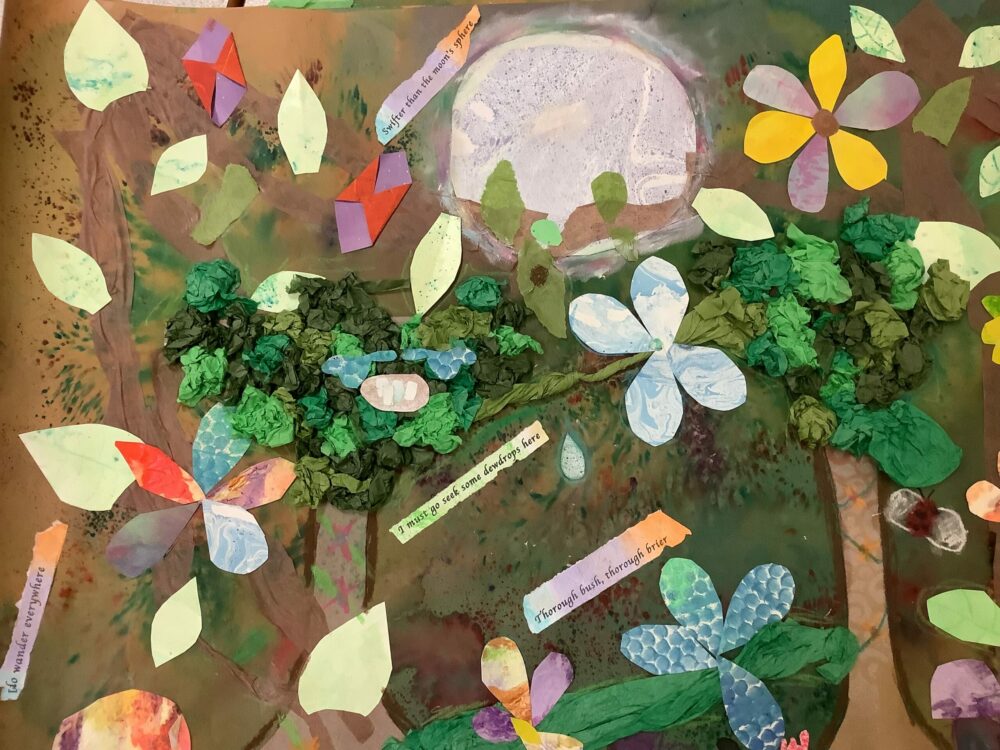
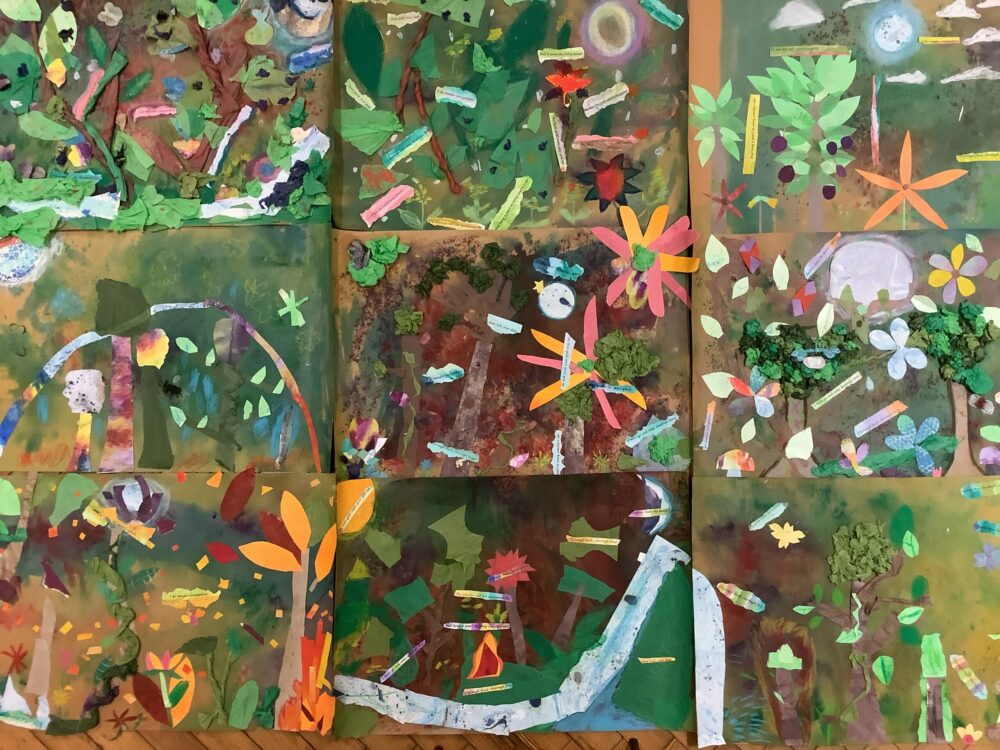
Reflection:
As a class, discuss how you used certain materials/processed to convey dark and light. What did you enjoy using most and why? What did you find most challenging?
Can you recount the words and imagery Shakespeare evokes to describe the forest and can you identify areas in your collage where this is communicated?
Can anyone think of ways this activity could work using other materials? Perhaps it would work well in an outdoor setting. A Midsummer Night’s Dream is sometimes performed outside amongst real trees with the audience moving around with the characters. How do you think this could enhance your experience of the play?
Move onto session five here.
